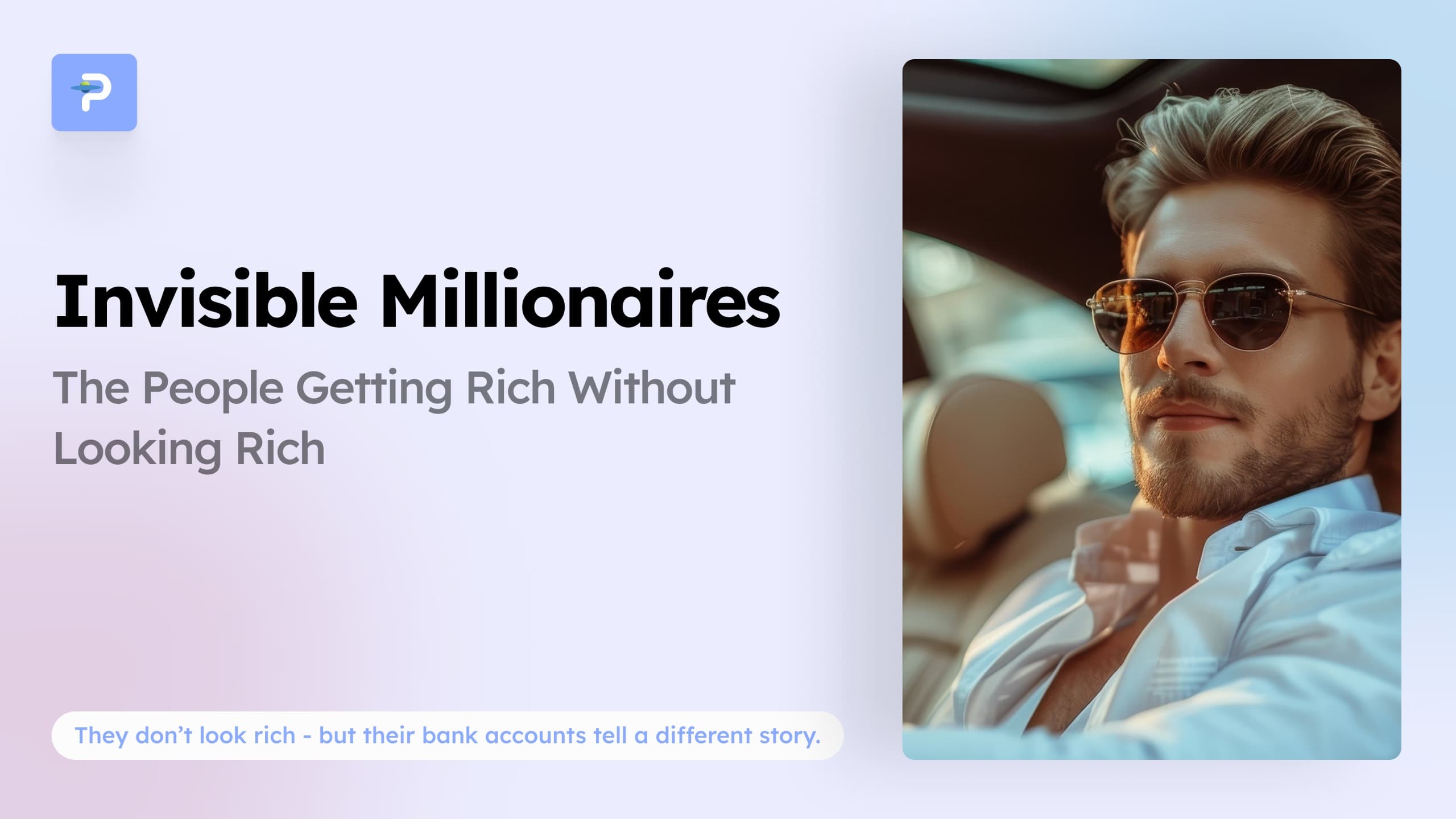The term “invisible rich” describes folks who live modestly, keep their spending under control and build real assets rather than just conspicuous consumption.These people often:
- buy reliable used cars instead of brand-new showpieces, because they know a depreciating vehicle isn’t wealth.
- avoid taking on high-interest debt just to look good.
- invest early and consistently, utilising time and compound growth to build real net worth.
- prioritise “invisible” assets, things like index funds, businesses, rental properties, rather than ego-driven purchases.
- resist the peer pressure & comparison game. When others are buying the latest gadget or luxurious vacation to keep up, they stay true to their value system.
In short: they don’t look rich, but their bank accounts tell a different story.
In a world where everyone is “doing it for the gram”, where lifestyle inflation and conspicuous consumption can mask real financial stress, invisible wealth stands apart. The stakes are real:
- Flashy spending often means high ongoing costs, maintenance, upgrades, debt payments, stress.
- On the contrary, building quietly gives you freedom, freedom to choose, freedom to change, freedom to not depend on a high-pressure job or status to define you.
- The invisible millionaire mindset shifts away from “what big purchase can I make now” toward “what asset can I build that keeps giving me value over time”.
Let’s dig into some of the core habits that help invisible millionaires pull this off:
They purposely spend less than they earn. They don’t stretch credit to keep up with peers. According to research, one of the main secrets is simply: “they don’t spend beyond their means”. That means: choosing a car you can afford, buying or using a home you can service easily, limiting loans, avoiding bursts of big showy spending that don’t serve long-term purpose.
Rather than chasing the next big “hot” investment, they set up systematic habits: regular savings, automatic transfers into investments, letting compounding do the heavy lifting.They don’t rely on luck or hype; they rely on consistency.
These aren’t just assets that exist behind the scenes, they are assets that don’t scream “look at me” but quietly grow: index funds, rental properties, businesses with solid cash flow.Because what matters is not how you look today, but what your assets will generate tomorrow.
Invisible millionaires aren’t driven by status. They’re often driven by freedom, security, personal control. They understand that a luxurious home or car may cost them years of stress. Research shows they’re “unbothered by others’ opinions”. Their self-worth isn’t measured by external validation but by real value creation and financial resilience.
They think in decades, not weeks. Investments aren’t flipped in months, houses aren’t bought for immediate resale value. They trade short-term glamour for long-term stability and growth. It often means they forego some “fun now” in favour of “freedom later”.
Picture this: A person drives a ten-year-old reliable car, has a modest home in a decent neighbourhood, goes on holidays but doesn’t document every moment on social media. They don’t dress in big logos and they don’t brag about their net worth. Yet, behind the scenes, they have a portfolio of stocks, maybe some rental property, no crippling debt, and they’re on track for financial independence.
What we don’t see: the silent purchases of index mutual funds month after month; the homework done to learn investing; the habit of limiting consumer debt; the trade-off of “less flash now” for “more freedom later”.
- Because the visible cues we associate with wealth (big house, flashy car, new phone each year) are often expenses, not assets.
- Because showing off wealth invites scrutiny, envy, taxes, responsibilities. Many prefer to stay under the radar.
- Because the slower, quieter approach doesn’t create viral social-media moments, but it creates real, lasting wealth.
Even if being a millionaire isn’t the immediate goal, we can borrow from this approach:
- Track your spending — know where your money is going.
- Automate savings/investments — make the good behaviour default.
- Reflect on what you truly value — is status worth the strain?
- Avoid lifestyle creep — just because you can afford something doesn’t mean you should.
- Think long term — decisions today echo decades later.
Invisible millionaires are proof that wealth doesn’t have to look loud to be real. They build quietly, live intentionally, and prioritise value over vanity. If you’re feeling uneasy about the “always spending to appear rich” treadmill, remember: freedom is quieter than flash. Real wealth often whispers rather than shouts.
And who knows, the person mowing your lawn, riding the subway, quietly investing month after month might just be the richest person you’ve ever met.




